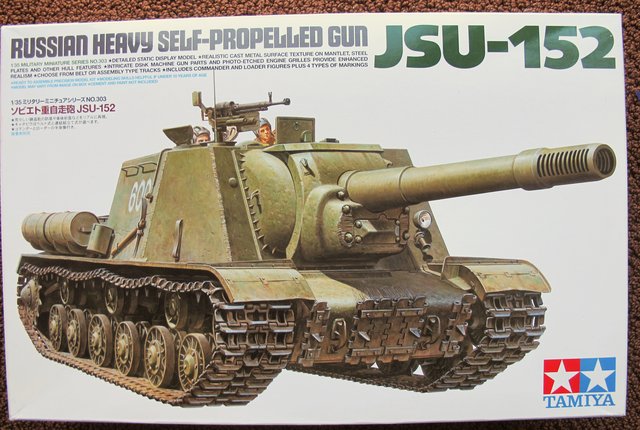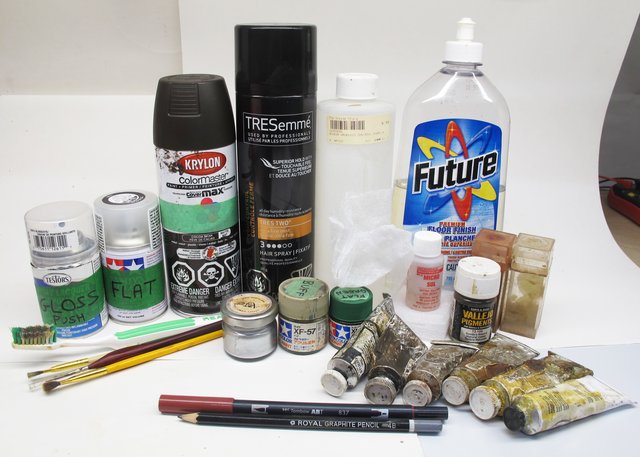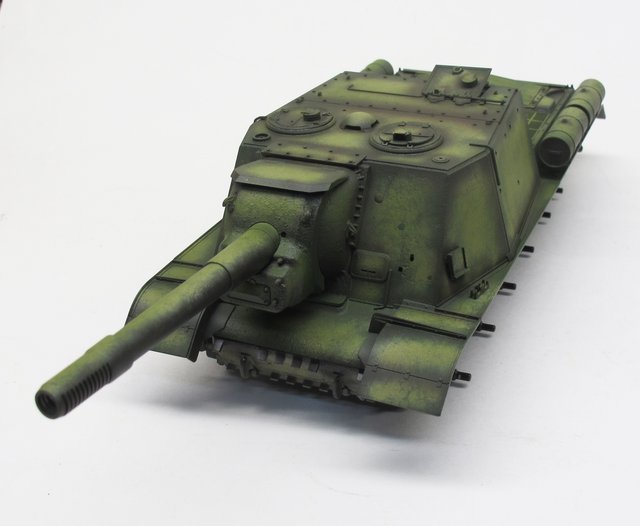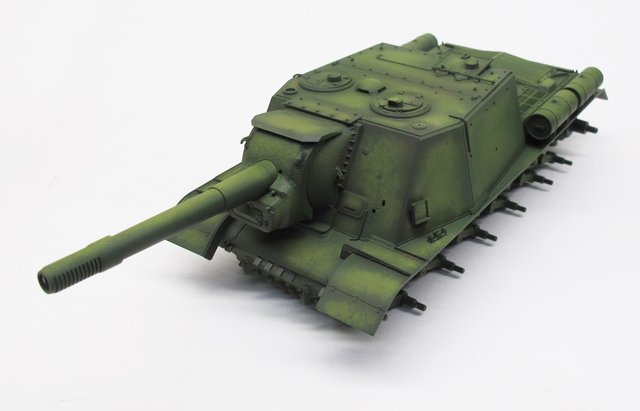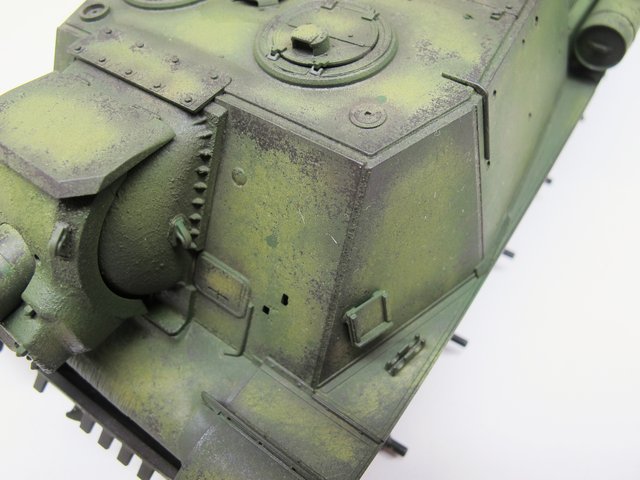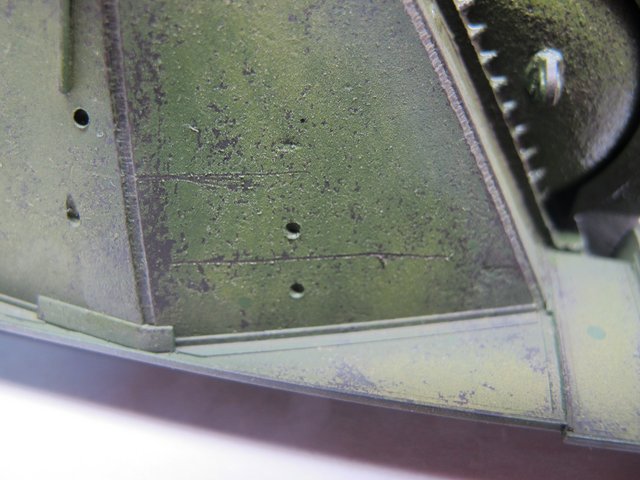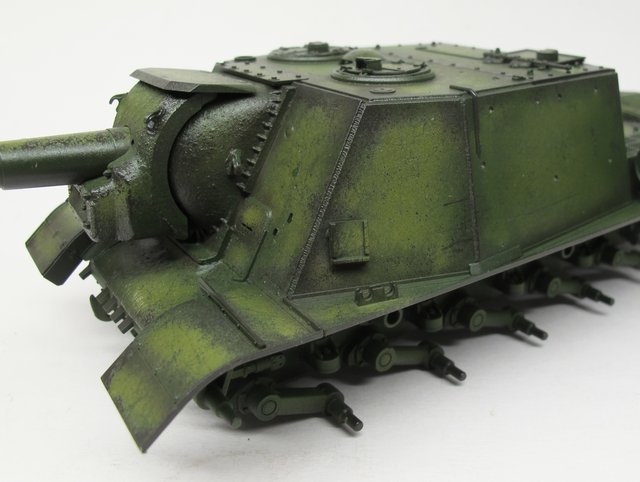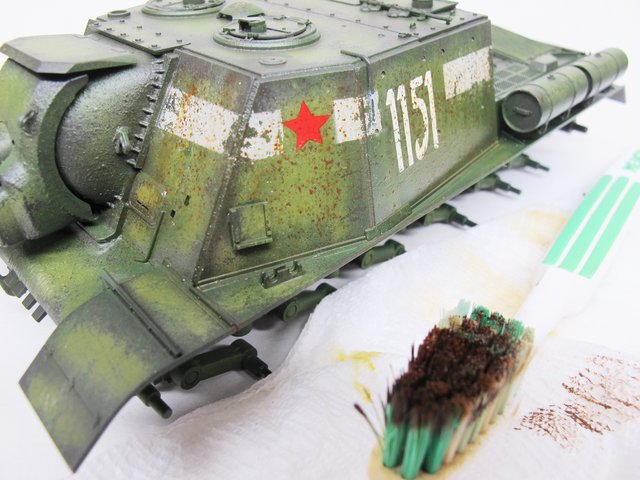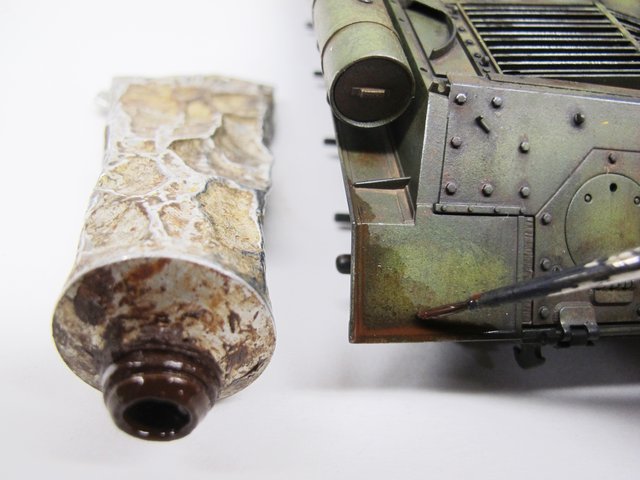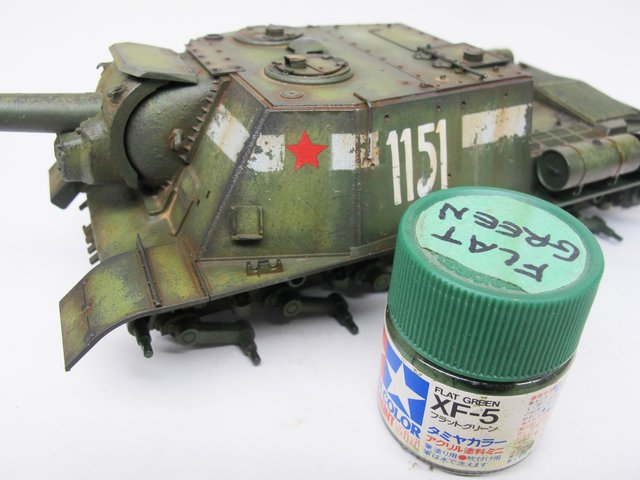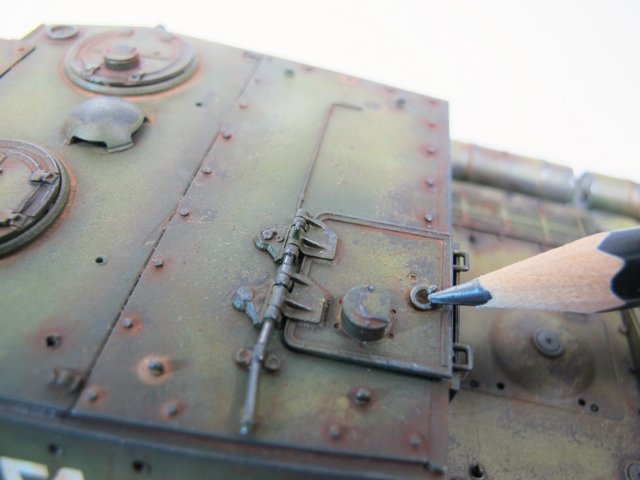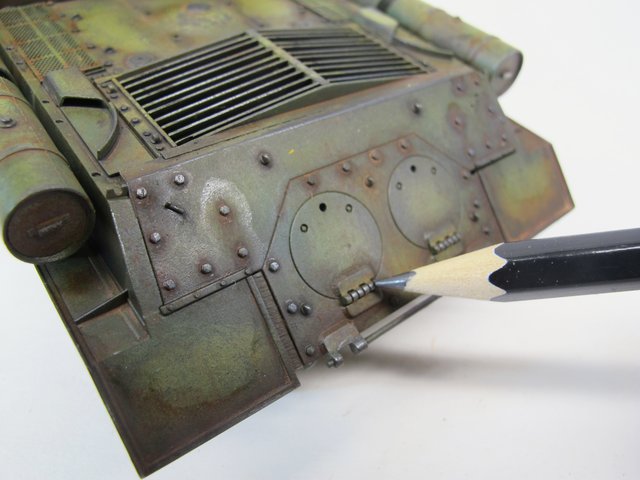Some folk here very kindly asked if I could do a tutorial on a build with a focus on painting and weathering. So here's my attempt using Tamiya's 1:35 JSU-152 as a subject.
The second photo shows the materials I usually use for a "Russian Green" subject. Since there aren't a lot of specialty stores where I live, I try to keep the materials as generic and broadly available as possible! Anyway, here's what's in the photo, roughly left-to-right, and top-to-bottom: gloss coat, dull coat, Krylon spray paint ("Cocoa Bean" colour), fine hair spray, odourless paint thinner, used fabric softener sheet (the crumpled white thing in front of the thinner), Future floor polish, old toothbrush, cheap stiff-bristled paintbrush, fine-tipped paintbrush, broad soft paintbrush, Rub & Buff metallic wax (or similar), Tamiya XF-57 "Buff" (or similar), Tamiya XF-5 "Flat Green", artists oils in various shades (from beige through dirty yellow, brown, rusty red, dark brown, and black), Microsol (or similar), pigments (light sand, rust, and dark brown), rusty-brown soft-tipped marker, and a soft graphite pencil. Whew! Now down to work!
